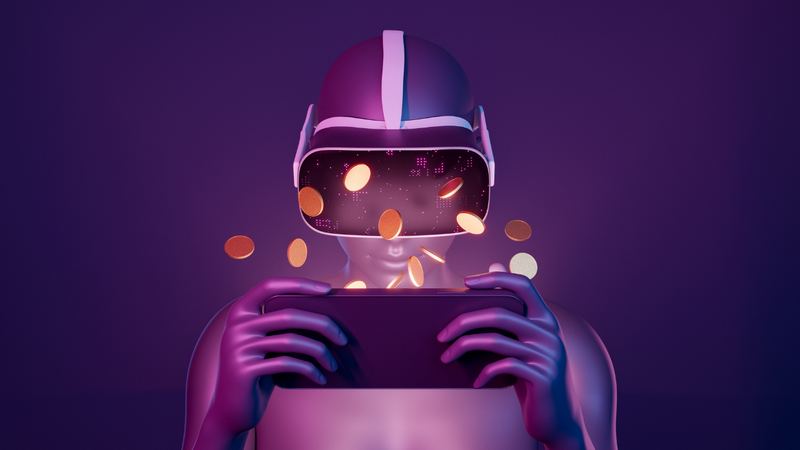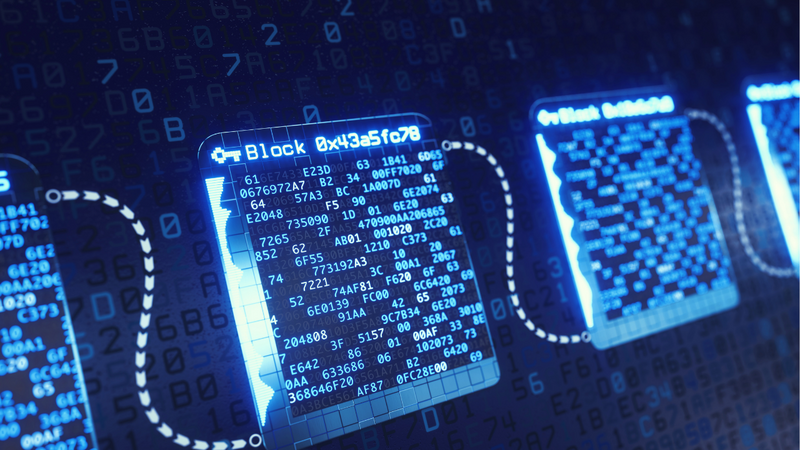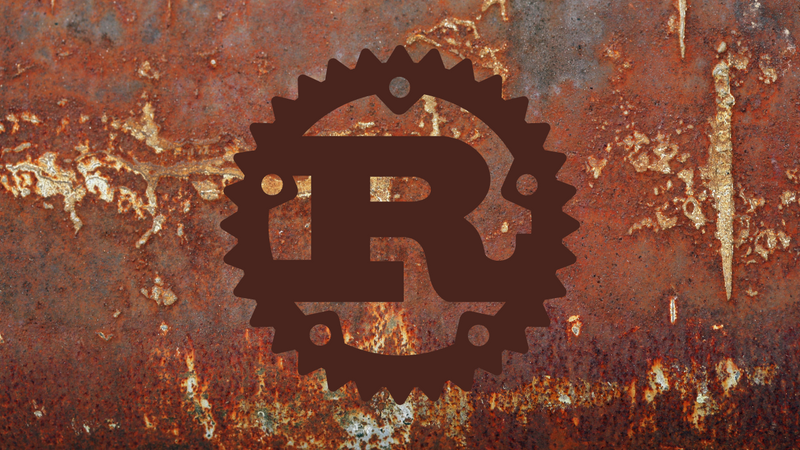What is a DAO? What do they do? Why should I care? I found these questions difficult to answer when I started my research. The challenge stems from a variety issues but the two primary ones are: 1) the definition of a DAO is going through a lot of ideation and formation and we should not expect a clear answer for a few more years and 2) there's not a lot of strong signal compared to the marketing noise. This post aims to amplify the good signal curating and synthesizing the best responses from the web3 community.
Note to Readers regarding the Metaverse
It's hard enough to write about DAOs in a cohesive, neutral way —without conflating other concepts and topics. Therefore, this article will make no other reference to Metaverses. If you later want me to write about Metaverse, send me an email. You can find it on the about page.
What is A DAO
The future is already here – it's just not evenly distributed – William Gibson
The story of a DAO is still being written, so instead of presenting the perfect definition, I will present a few varieties from noteworthy thought-leaders.
Aaron Wright
Aaron is a co-founder of Tribute Labs (formerly OpenLaw) with a near infinite amount of experience supporting a network of DAOs. The reach from his work is remarkable. Below are a few DAOs he's supported:
- The LAO, a DAO of DAOs (or DAO as an Ecosystem) that complies with U.S. Law[1]. It's a reboot of The DAO, which we will discuss later in this article.
- Flamingo is NFT art collectors and the later projects that support NFTs.
- Neptune is a venture capital DAO optimized for speed of liquidity. Members pool capital and then democratically vote on investment strategies[2].
- Museo serves as a place to collect and preserve NFTs. Think Internet Archive for crypto.
- Neon invests in metaverse assets, including digital fashion pieces and avatars.
All members of Tribute’s network of DAOs are accredited investors, and the tokens are only transferrable to other members. Together, Tribute’s network of DAOs has collected around a hundred and ten million dollars in Ether[3].
Aaron describes DAOs as a solution to a problem well-understood within the crypto community. DAOs can serve as a decentralized community for a specific topic, a way to enable people to unite, curate, and process information through dialogue and discussion in structured ways[4]. The structured part is interesting because two effective techniques for aligning people are incentives (reward tokens) and rules/governance (voting tokens).
Andrew Beal
Andy is the brainchild behind 30,000 ft, a substack newsletter that dives deep into all things crypto. Andy is a lucid thinker and fantastic writer. I suggest you all subscribe today.
Andy best describes DAOs as an evolution of decentralized autonomous corporation (DACs)[5]; technical structures that can potentially be used to mimic business structures such as corporations or investment funds.
DAO is a combination of two parts:
- One or more smart contracts that (a) hold capital (treasury) and (b) enforce a decision-making process.
- A token represents ownership in the DAO and the ability to participate in the decision-making process (voting).
These components - capital, ownership, and a decision-making structure - are the minimum viable components of a company.
Alex Zhang
Alex is the mayor of Friends with Benefits, an A16z-backed DAO During different podcast talks, Alex often alludes to DAOs as a new product category within web3, completely unencumbered by Web 2.0's trappings of scale. A successful DAO doesn't require 10M users, it can succeed with 5,000 [6], and the best thing is to establish high-quality feedback loops to listen to group needs. As for where Web 2.0 tech teams often sought to serve groups of individual users (product-market fit), the new paradigm shift we're going through is "community as markets" (or "community as economies"). This new model –dedicated to servicing congregations of people– creates a new need for better tooling that can improve community success and enhance digital-first events and social experiences.
DAOs as a people-powered vehicle for change. DAOs as a native business structure for the web. DAOs as a better product platform for community markets. These are only three examples of DAOs. As I continue to discover more examples of DAOs, I will continue to add to this section.
DAOs, a Visual Story
Let’s switch hats and examine DAO’s from a community discovery over to a business opportunity.
I love this infographic from @Cooopahtroopa because it demonstrates the market (and acquisition) opportunity.
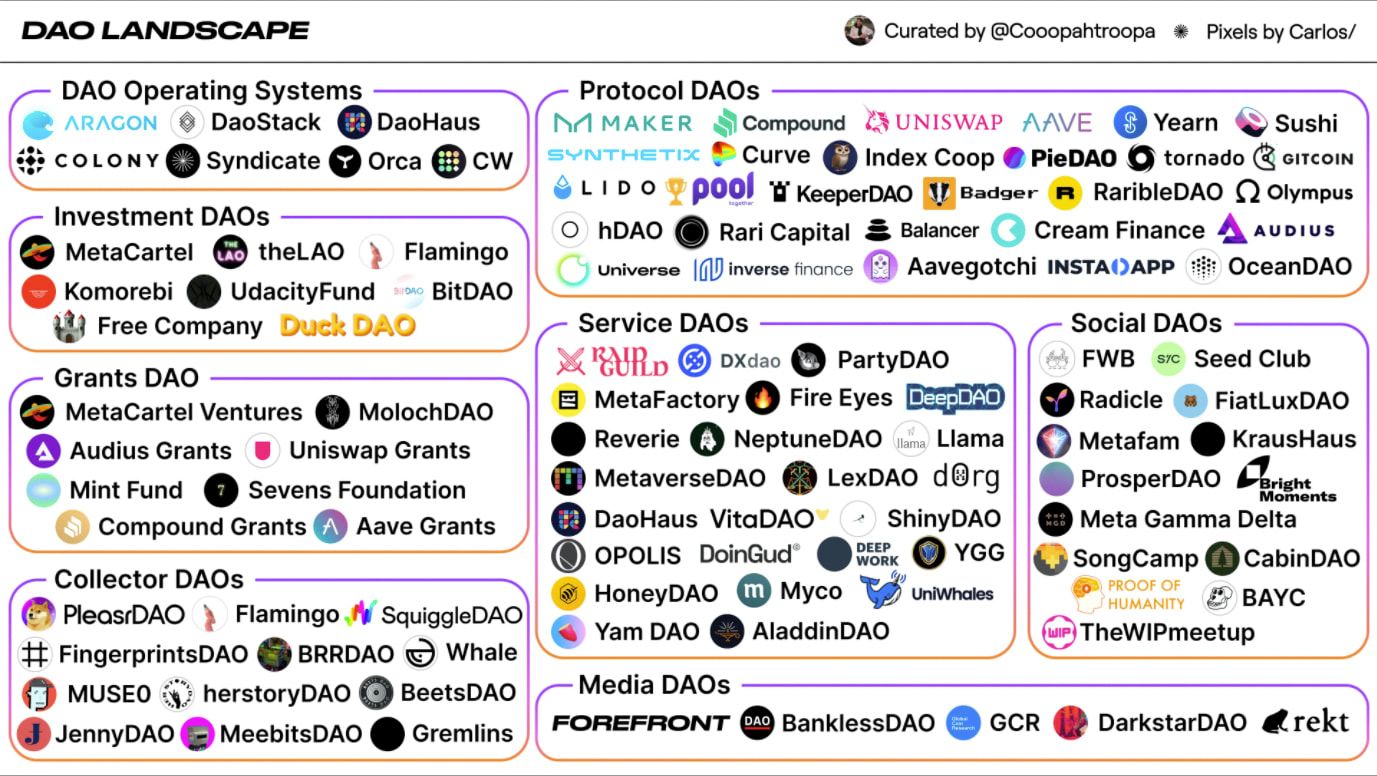
The landscape infographic above aligns with Gartner's Hypecycle[7]. As new technology emerges, you see tons of venture funding invested in the growth of that technology. Once consumers finally try the product's use cases, they find flaws and limitations that lead it towards the "Slope of Disillusionment." DAO's have a few more years before they hit "Peak of Inflated Expectations".
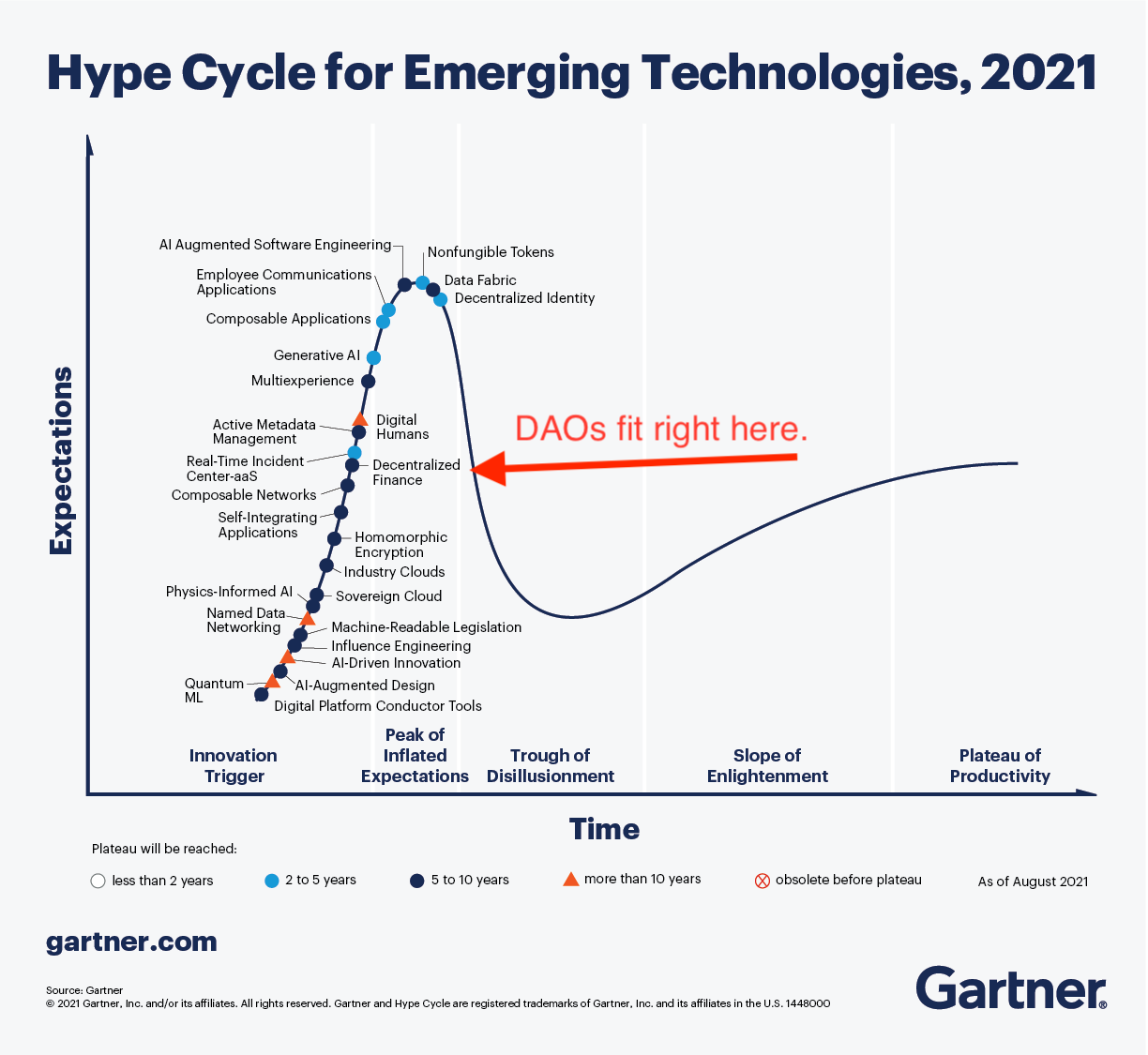
When I look at these two diagrams side-by-side, I see a few different things. Firstly, I see a new business-to-consumer (B2C) technology that will require 5-10 years to find its place within society. That's great for VC funds and other strategic investors. From a product perspective, there will be a new need to migrate on-chain user data from one DAO to another. From a policy perspective, the definition of a DAO will align perfectly by the time the product reaches maturity. From a DAO membership perspective, we will likely see the birth of Super DAO's (which I define as 1M members or more). From a leadership perspective, I look forward to seeing the next generation of executive leaders get their first lessons from DAO's.
What does all of this mean?
If you are an entrepreneur, now is the time to create DAOs composed of strong communities. "Strong" can be measured in a combination of ways, but to name a few:
- Members who contribute capital.
- Members who contribute skilled labor.
- Members who demonstrate influence (political, social, support group-driven, meme-driven, etc.).
- Members, composed of decision-makers, who vote on topics that materially impact other digital (or real-life) communities.
With your newly curated group of members, empower them with super-human capabilities through high-quality tools (software) that demonstrate "community-market fit." This is the place where product managers and engineers can do their best work.
web3 is very different than Web 2.0, which primarily focuses on volume (aka the number of users, number of shares, time spent, revenue from attention sold). In web3, you don't need 10s of millions of users when you can demonstrate impact with only 1000.
If you are an investor, here is your opportunity to expand your portfolio to include digital products that go beyond serving individual users and instead serve groups of users.
What are the cautionary tales DAOs are currently accelerating?
"History doesn't repeat itself, but it does rhyme."
– Mark Twain
Many of life's previous mistakes will likely appear again within web3. Unfortunately, I don't yet have a strong enough dataset to share. So stay tuned in a future article for web3 gone wrong.
For now, the best story we can learn from is The DAO (or Genesis DAO) Hack[1:1]. The DAO was created on Ethereum, led through the imagination of developers and technologists. The DAO aimed to serve as a venture capital fund for the crypto and decentralized area. The lack of a central authority reduced costs and, in theory, gave more access and control to investors. Unfortunately, the DAO was hacked, funds were stolen, Ethereum Classic was born as well as a new need for legal recognition within DeFI.
DAO Potential
Innovation is a messy thing, and 90% of startups fail. For those 10% who succeed, here are a few outcomes I look forward to seeing.
- [x] For-profit Limited Liability Corporation can raise money in minutes instead of months.
- [ ] A not-for-profit organization that can identify issues organizes groups of people to address those issues, draft proposals, vote and establish action plans in months instead of years.
- [ ] New opportunities for young people to build their internet reality. Let's face it, most of Web2.0 has been staked and consolidated by big tech. Web1.0 (Lycos, Yahoo, Geocities, AOL, AOL Instant Messenger, MySpace, SecondLife) don't seem to be worth saving other than through the lens of the Wayback engine. We need to let the next generation express themselves, and many believe web3 will become that outlet.
web3 Glossary
- DAO = Decentralized Autonomous Organization
- Utility Tokens = Tokens that are used to receive utility. Since I love analogies, Think back to your old days inside the arcade room of a mini-golf center. You would put $1 into a token machine and receive four slugs. With those slugs, you would utilize them to play Galaga or a round of skeeball. Utility Tokens within web3 offer a similar benefit to renting web hosting or utilize a third-party SaaS app, etc.
